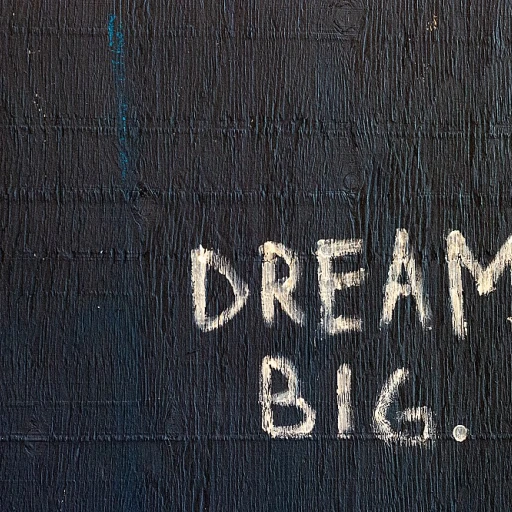Understanding the Role of a Chief Human Resources Officer
A Day in the Life of a Chief Human Resources Officer
Thinking about taking up the rewarding position of a Chief Human Resources Officer (CHRO)? Well, let's take a look at what it really means to step into those shoes. The CHRO isn't just about keeping the wheels turning in HR; it's the person who links company goals with employee satisfaction, making sure both sides cheer together. A CHRO juggles a myriad of roles—including proposal development, team management, and compliance—while ensuring that the HR strategies align with the overall business vision. You might find yourself deep in the throes of a proposal review process with a hot cup of coffee as you review a red team's input or brainstorm with a creative pink team to nurture innovation. Building the Perfect Team A CHRO is a master in choosing win strategies. Much like an artist uses a palette, a CHRO employs different 'color teams':- The pink team fosters a lively atmosphere for new ideas to bubble up,
- The red team audits thoroughly, ensuring high proposal quality and meeting compliance standards.
The Pink Team: Nurturing Creativity and Innovation
Creativity and Innovation as Superstars
In the bustling world of business, creativity and innovation are winners. They're the spark that makes the Pink Team shine. They're your go-to folks when you're focused on bringing fresh ideas to the table. But it's not just about having a blast brainstorming or coming up with the snazziest proposal. This team's superpower lies in understanding the proposal review process and weaving win themes seamlessly into their major proposals. Members of a Pink Team are the cheerleaders of innovation. They’re fiercely dedicated to nurturing fresh ideas. They aim to keep content lively and proposals as colorful as a kaleidoscope. It's not just about creativity; it's about backing it with solid proposal quality, sticking to compliance norms, and ensuring the content is ready to rock the stage. Pink Teams work closely with their comrades—say hello to the Blue Team reviewers. They share the roadmap, like a painter with their palette, aligning creative proposals with the quality demands and management objectives of the broader proposal development process. Think of this as a dance, where everyone from writers to reviewers moves in sync and the RFP wins. Team collaboration is a cornerstone here. It's about mastering the balance between taking big creative leaps and adhering closely to proposal review standards. Each member's role—from the whizzes at proposal writing to those acing the red tape of bureaucratic compliance—is appreciated, respected, and pivotal to shaping ideas that stand out in a proposal quality and compliance-centric world. For more on nurturing creativity and driving change, check out the insights here. Pink Teams are the visionaries driving innovation. This isn’t some distant dream; it's a real, tangible approach that will anchor your next big proposal, ensuring it’s not only packed with vibrant ideas but also cohesive and ready for the big win in the proposal review process.The Red Team: Ensuring Robust Risk Management
The Crucial Role of the Red Team
In the world of a Chief Human Resources Officer (CHRO), setting up efficient teams is an essential part of daily work. Among these teams, the Red Team holds a significant position. Red Teams are all about evaluating and mitigating potential risks in a proposal process or organizational change. Their presence is like having a safety net that spotlights areas needing attention before a proposal or new process moves forward. By delving into proposal reviews, the Red Team is there to push boundaries—ask the challenging questions others might shy away from. A seamless review process helps in highlighting potential vulnerabilities in proposals while ensuring compliance with established standards. Think of the Red Team as tough coaches, primed and ready to ensure the team's readiness when it counts. Integrating a team model such as this provides a comprehensive layer of proposal quality assurance. The Red Team is paramount in the proposal development process. They act as the diligent reviewers, scrutinizing the content with eagle eyes, identifying areas that need refining so the proposal will ultimately shine like gold. Through intense review of colors—reds, pinks, even blues—the Red Team works on clarifying and enhancing proposal themes. For the proposal team, this means meeting quality requirements while adequately planning to win over reviewers. The review proposal thus evolved becomes a victory statement, giving the company a better chance to win. The Red Team ensures the assurance process, from proposal writing right through to the final review. This reduction of risks and enhancement of proposals increases the chances to win an RFP (Request for Proposal). The relationship between the creativity of the Pink Team and the risk-centric focus of the Red Team is especially fruitful in proposal management, where their combined efforts often herald successful results. You can learn more about how CHROs play a vital role in managing change, including team dynamics management, a critical competency for effective HR leadership.The Gold Team: Driving Performance and Excellence
Leading the Way with Performance and Precision
Stepping into the shoes of the Gold Team isn't just about a flashy title; it's about driving results with finesse. This team isn't looking to just meet expectations—they aim to outshine them. With a focus on maximizing output, the Gold Team bring their A-game to every proposal, review, and process involved. In the journey of proposal development, the Gold Team ensures that quality doesn't get lost in the shuffle. Whether it's aligning win themes or fine-tuning content, they're on it. But how do they make it work? Here’s a peek into their process:- Rigorous Proposal Review Process: The Gold Team dives into every proposal with an eagle eye. Their reviews are detail-oriented, ensuring compliance while maintaining the essence of creativity fostered by the Pink Team.
- Seamless Integration with Teams: Unlike the Red and Pink counterparts, the Gold Team works cross-functionally, synchronizing with other teams. This integration guarantees that every proposal submission is bulletproof, blending creativity and practicality.
- Commitment to Excellence: Proposal quality is non-negotiable. Through ongoing team reviews, they refine strategies, keeping an ear to the ground and an eye on the prize.
Balancing Diverse Team Dynamics
Finding the Sweet Spot in Team Dynamics
Balancing the dynamics of diverse teams like the Pink, Red, and Gold ones is a bit like conducting an orchestra. Each team has its unique color and role in the grand symphony of an organization. The Pink Team, with its focus on creativity and innovation, needs a nurturing environment where ideas can flourish. On the other hand, the Red Team is all about rigorous risk management, ensuring compliance and quality in every proposal and process. Meanwhile, the Gold Team drives performance and excellence, pushing the boundaries of what's possible.
So, how do you balance these different colors to create a harmonious team model? It starts with understanding the strengths and weaknesses of each team. The Pink Team thrives on creativity, but without structure, their ideas might not translate into actionable proposals. The Red Team ensures compliance and quality but can sometimes stifle creativity if not managed well. The Gold Team's focus on performance can lead to burnout if the team isn't supported properly.
Creating a Unified Team Proposal
To win in today's competitive environment, it's crucial to blend these teams effectively. Think of it as a well-oiled machine where each part plays a crucial role in the proposal development process. The Pink Team can kickstart the process with innovative ideas, the Red Team can review these ideas for feasibility and compliance, and the Gold Team can refine them to ensure top-notch performance and execution.
Regular team reviews and proposal reviews are essential. These reviews act as checkpoints in the development process, ensuring that each team's contributions are aligned with the organization's goals. By fostering an environment where feedback is encouraged, teams can learn from each other and improve proposal quality over time.
The Role of Leadership in Team Development
A Chief Human Resources Officer (CHRO) plays a pivotal role in managing these dynamics. They must ensure that each team feels valued and understood. By promoting open communication and collaboration, a CHRO can help teams overcome challenges and embrace opportunities for growth. It's about creating a culture where every team member feels empowered to contribute their best.
In the end, balancing diverse team dynamics is about understanding the unique contributions of each team and finding ways to integrate them seamlessly. It's a continuous process of adaptation and growth, ensuring that every proposal not only meets but exceeds expectations.








